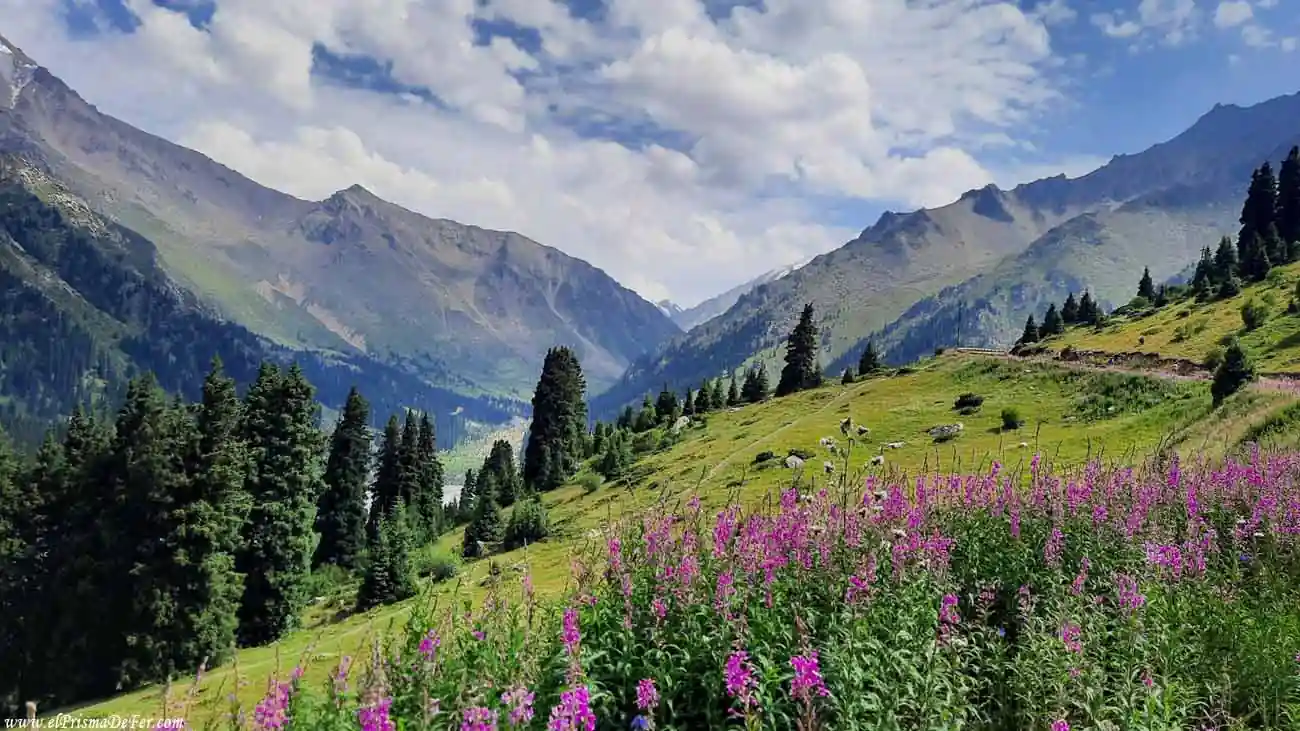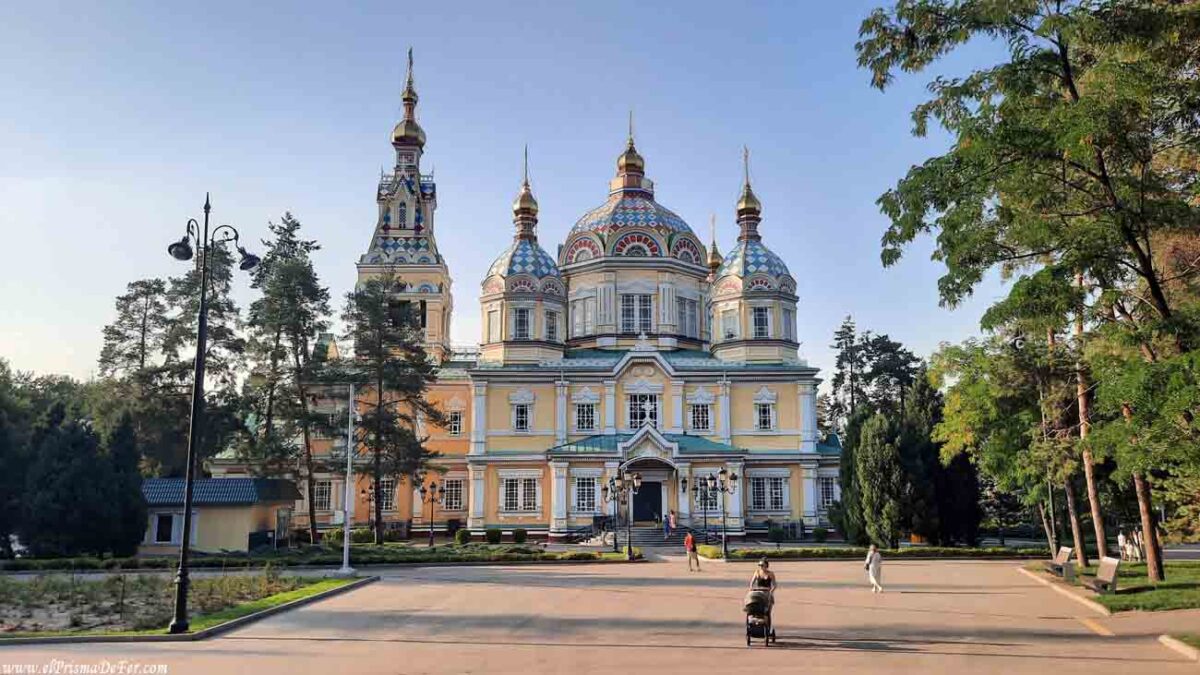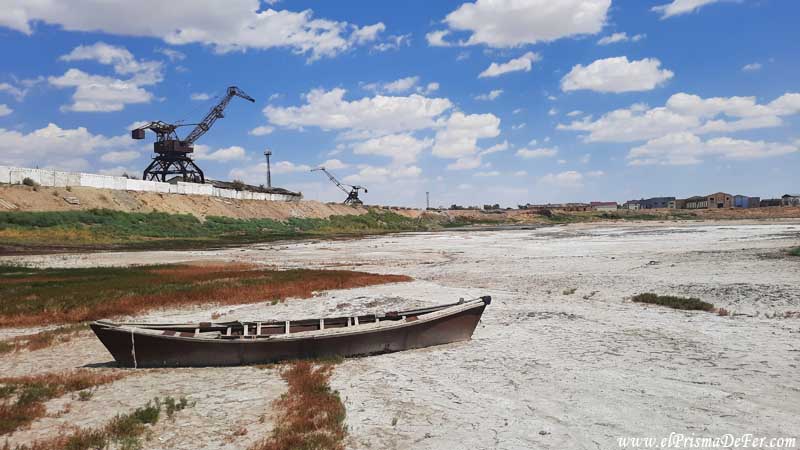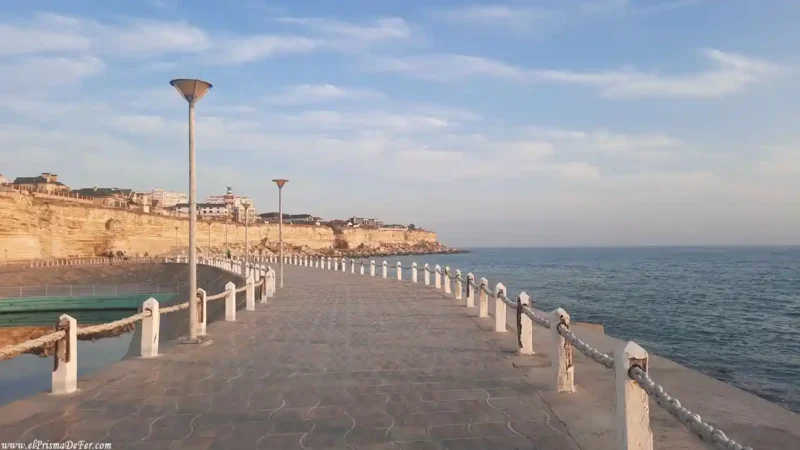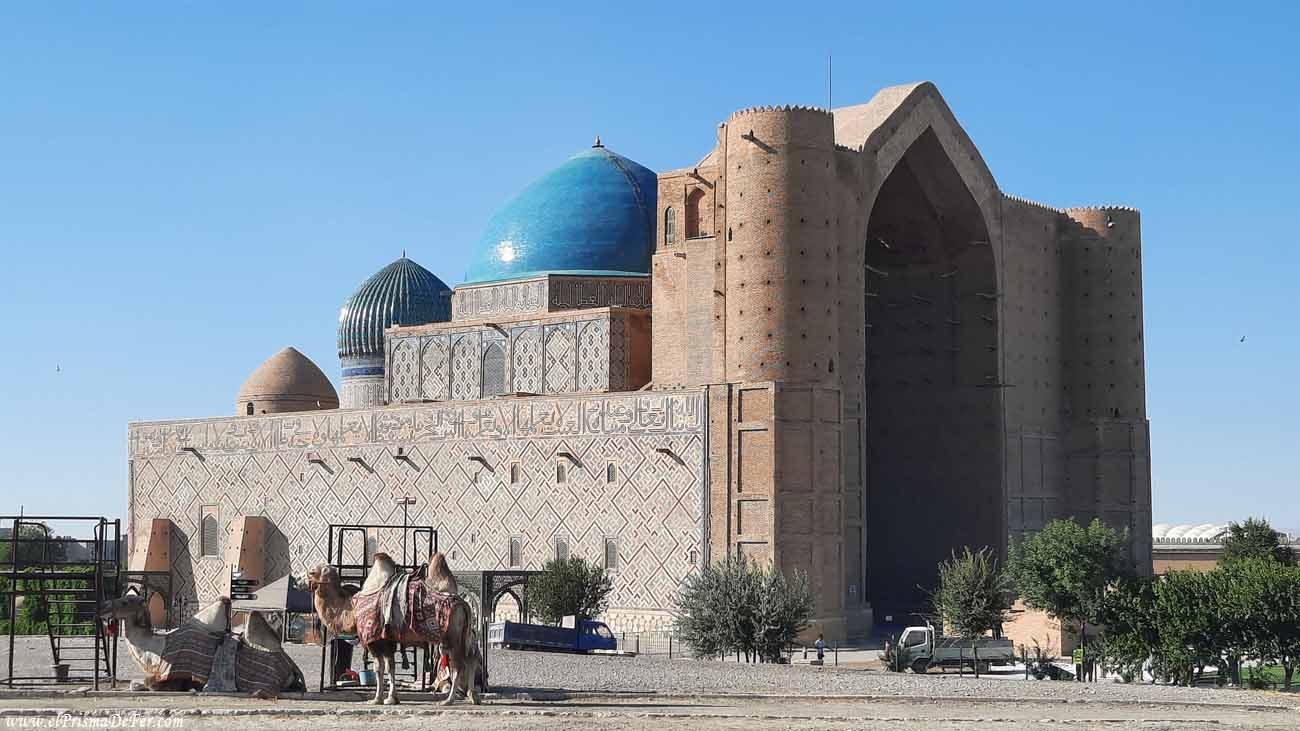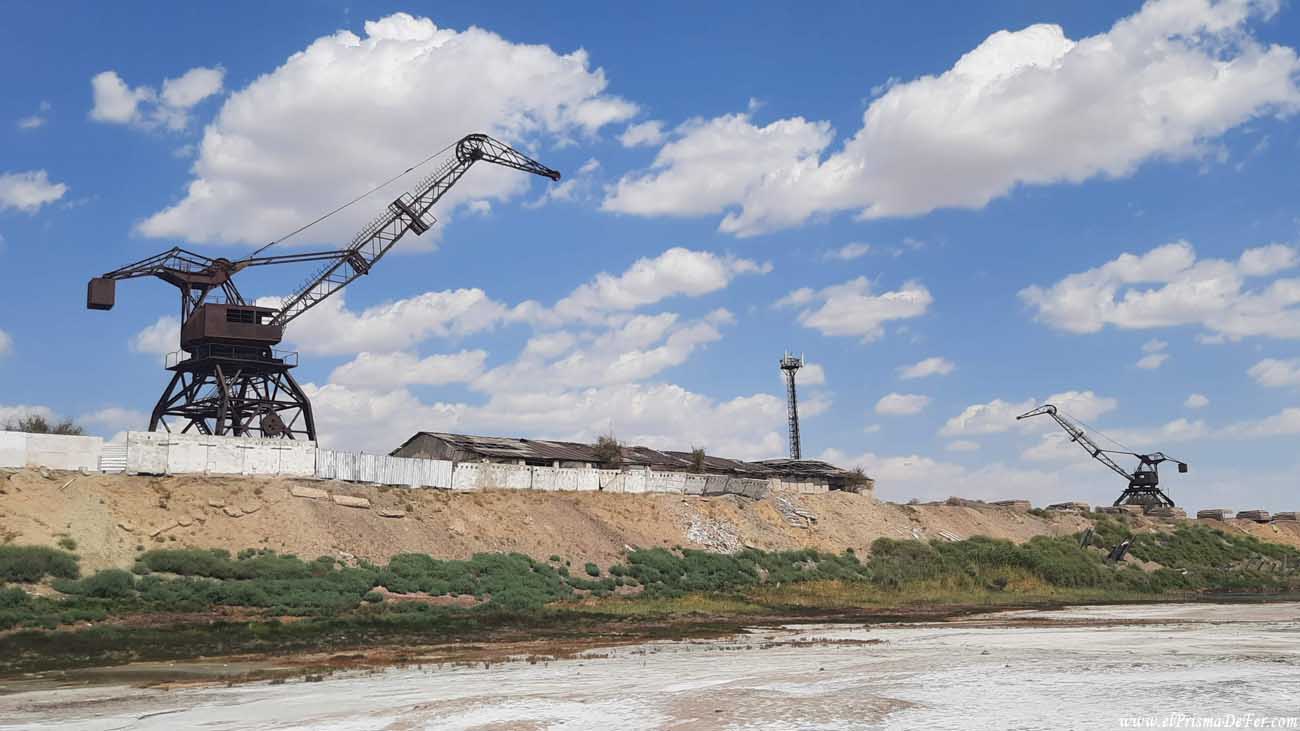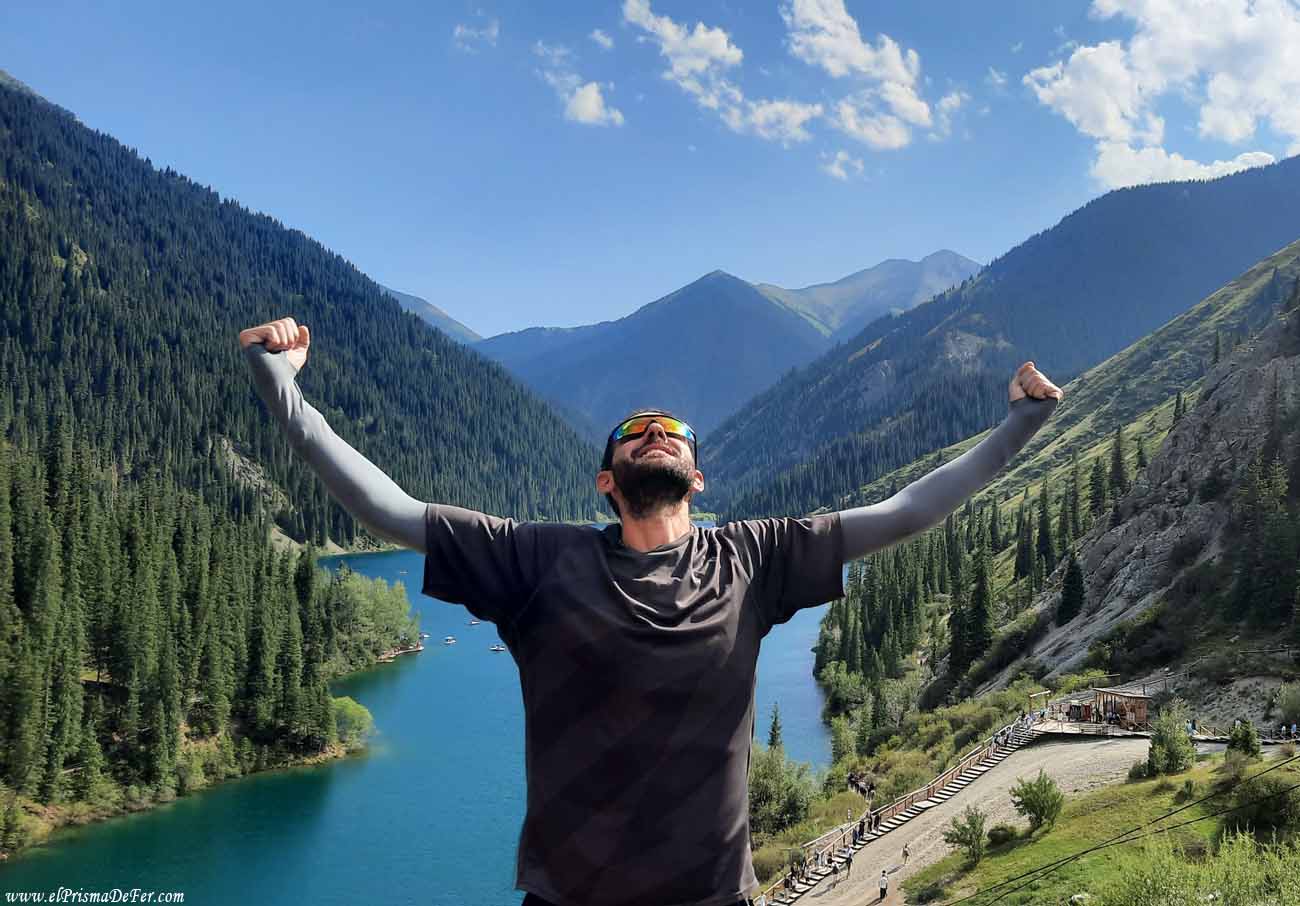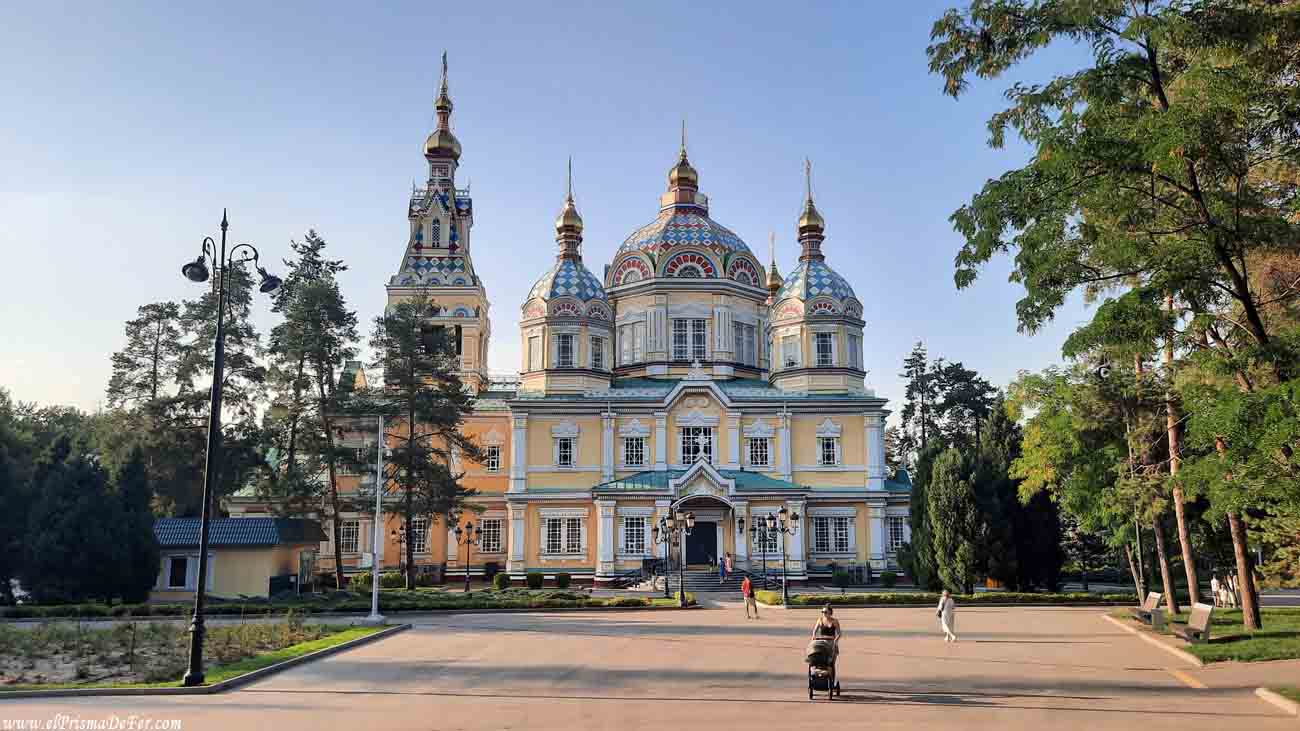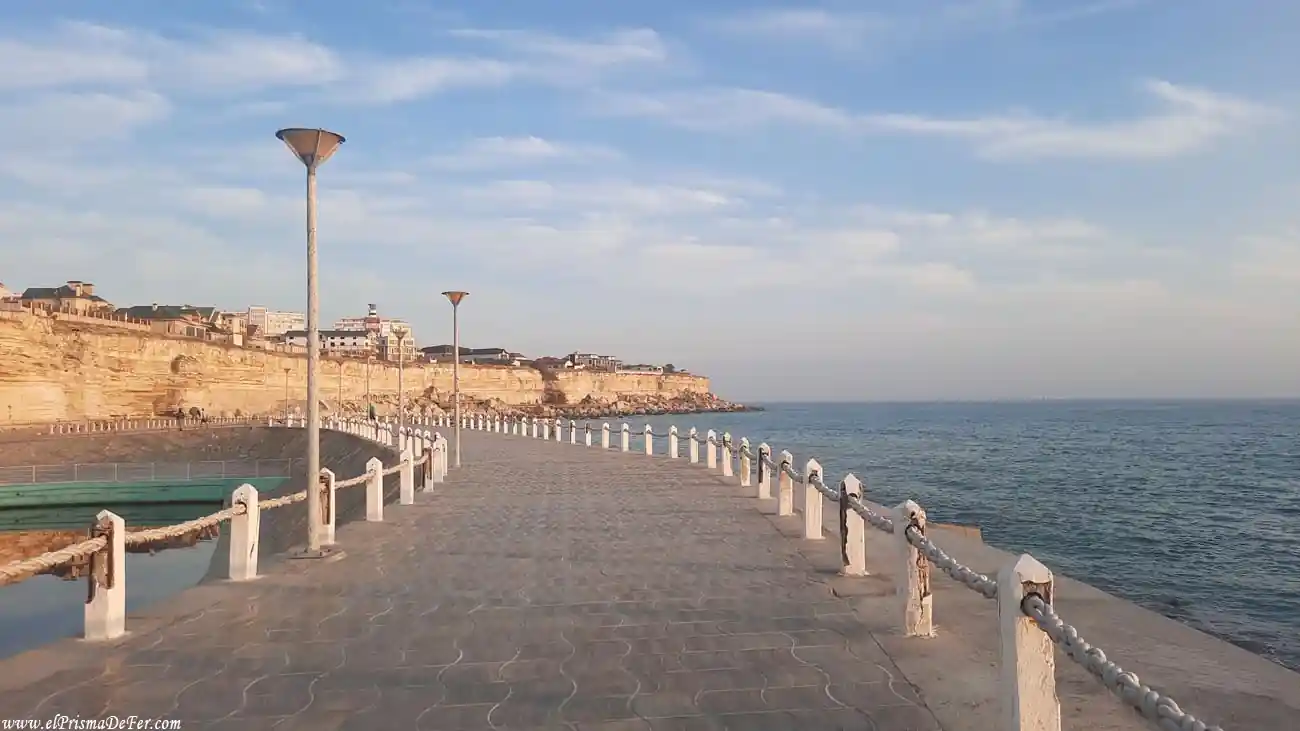Kazakhstan is one of those destinations that rarely tops travel lists, but can surprise those who dare to explore it. With a vast expanse of land, landscapes ranging from endless steppes to snow-capped mountains, and modern cities that coexist with nomadic traditions, this country is a true mosaic of contrasts. Traveling to Kazakhstan means discovering a land that, although little traveled by mass tourism, holds ancient stories, genuine hospitality, and a deep cultural identity.
In this guide, you'll find everything you need to plan your adventure: from how to get around the country and what places you can't miss, to practical tips on safety, budgeting, language, and local customs. If you're drawn to off-the-beaten-track travel, remote landscapes, and the feeling of being a little "at the end of the world," Kazakhstan will fascinate you.

Table of Contents
What to know before traveling to Kazakhstan
| Language 🗣️ |
| The official language is Kazakh, a Turkic language written in the Cyrillic alphabet, although Russian also has official status and is widely used in everyday life, especially in cities. Signs in English can often be found in tourist attractions. |
| Currency 💵 |
| The local currency is the Kazakhstani tenge (KZT). While you can exchange euros or dollars at exchange offices, it's a good idea to bring cash, as ATMs may not be available or cards may not be accepted outside of larger cities. |
| Religion ☪️ |
| The majority of the population professes Sunni Islam, although there is also a significant presence of Russian Orthodox Christians. The country is characterized by religious tolerance and peaceful coexistence between communities. |
| Location 📍 |
| Kazakhstan is the largest country in Central Asia and the ninth largest in the world. It borders Russia to the north, China to the east, Kyrgyzstan, Uzbekistan, and Turkmenistan to the south, and the Caspian Sea to the west. |
| Capital 🏙️ |
| The country's capital is Astana (formerly known as Nur-Sultan), a modern city that impresses with its futuristic architecture in the heart of the steppes. However, Almaty—the former capital—remains the country's most vibrant cultural and economic center. |
| Visa 🛂 |
| Citizens of many Latin American and European countries do not require a visa for short stays, usually up to 30 days. However, it is always advisable to check with the embassy or consulate before traveling. |

My trip to Kazakhstan was part of a long journey along the ancient Silk Road. In this post, you can learn more about the countries I visited and how to do it all on your own.
Map of Kazakhstan
📖 A look at the history of Kazakhstan
Kazakhstan's history is marked by constant movement: nomadic peoples, invading empires, and radical political changes. For centuries, the vast Kazakh steppes were home to nomadic tribes who moved with their animals, organized into clans with strong oral traditions, music, and hospitality.

🕌 Middle Ages
In the Middle Ages, the region was part of important trade routes such as the Silk Road, which brought cultural influences from China, Persia, and the Islamic world.

🏇 Mongol invasions (13th century)
In the 13th century, Genghis Khan devastated much of Central Asia. Although destructive, the Mongol invasions also integrated the region into a new pan-Asian trade network under the Mongol Empire.
🇷🇺 Russian and Soviet rule (19th century – 1991)
During the Soviet era, Kazakhstan underwent a profound transformation: industrialization was promoted, nomads were forced to settle, and controversial experiments such as nuclear tests at Semipalatinsk and large-scale agricultural projects were carried out. Labor camps (gulags) were also established, where thousands of political prisoners from different parts of the Soviet empire were sent.

🗓 Independence (1991 – present)
Finally, in 1991, following the dissolution of the USSR, Kazakhstan declared its independence. Since then, the country has sought its national identity, combining modern elements with a reappraisal of its nomadic roots and distinct culture. Today, it is a young state, with modern cities like Astana and Almaty, but deeply connected to its steppe past.

What are Kazakhs like? A country of diverse faces
One of the most fascinating aspects of traveling through Kazakhstan is experiencing its people: an ethnic and cultural mix that reflects centuries of history, migration, and coexistence. Far from being a homogeneous country, Kazakhstan is a true crossroads of Asia and Europe, and this is evident in the faces, customs, languages, and ways of relating.

 Ethnic Kazakhs: Nomadic Heritage
Ethnic Kazakhs: Nomadic Heritage
The indigenous Kazakhs belong to a people with Turkic roots and a nomadic past. They have typically Central Asian features: slanted eyes, light brown or tanned skin, high cheekbones, and dark hair. Their culture is deeply tied to the steppe, horses, oral tradition, and hospitality. Many maintain a strong pride in their roots, even in large cities.
 Russian influence: a visible presence
Russian influence: a visible presence
During the Soviet era, millions of Russians settled in Kazakhstan, especially in the north. Today, a significant portion of the population is of Russian origin, as reflected in the language, the Orthodox churches, the surnames, and even the physical appearance: fair skin, light eyes, blond or brown hair, especially in regions like Petropavlovsk, Kostanay, and Karaganda.
 A unique and harmonious mix
A unique and harmonious mix
What's most interesting is that many families combine both heritages: Kazakhs with Russian, Ukrainian, Korean, or German ancestry, the product of decades of coexistence during the Soviet period. The result is a visible ethnic mix: people who might appear Chinese, Russian, or Mongolian by features, but all identify as Kazakhs and share a common national identity.
🌍 Immigrants and foreign students in Kazakhstan
Kazakhstan is not only a country of vast landscapes, but also a crossroads of cultures. Although its population is predominantly Kazakh, there is a strong presence of immigrant communities that contribute to its cultural and social diversity.
🇷🇺 Russians in Kazakhstan
After decades of Soviet-era integration, about 15% of the current population is of Russian origin. In the north of the country, there are cities where Russian remains the predominant language. Many Russians have lived in Kazakhstan for generations, but there has also been a recent influx following political tensions with Moscow, especially after the conflict with Ukraine.
🇨🇳 Chinese presence
The economic relationship with China is very strong, especially in sectors such as infrastructure, energy, and trade. In border areas and cities like Almaty and Khorgos, a growing Chinese community can be seen, both among entrepreneurs and workers on joint projects. While they are not numerous in number, their presence is visible and strategic.

🇮🇳 Indian students
Kazakhstan has become a popular destination for Indian students, especially in the medical field. Universities such as Almaty and Shymkent welcome hundreds of young people each year, attracted by more affordable programs in English. There are also students from Nepal, Pakistan, and Bangladesh, which has generated a small but active community from the Indian subcontinent.

🚆 How to get around Kazakhstan
Kazakhstan is vast, and the distances between cities can be overwhelming. However, getting around the country is possible thanks to a transportation network that combines trains, domestic flights, buses, and shared taxis.
Train
The train is one of the most popular ways to travel long distances. Journeys are usually slow, but economical and scenic. There are night trains between major cities such as Astana, Almaty, Shymkent, or Aktau. You can choose between "platzkart" (open sleeper), "kupe" (closed four-person cabin), or first class. Buy tickets in advance, especially during peak season.

- Tickets.kz: This is the most reliable platform for checking train schedules, prices, and buying tickets across Kazakhstan. It's available in Russian, Kazakh, and English and allows you to choose seats, classes, and pay with an international card. It also has a mobile app for iOS and Android. This is handy if you're already traveling around the country and need to buy tickets on the go.
Buses and marshrutkas (shared taxis)
For medium distances, buses and marshrutkas (shared minibuses) are useful. They aren't always comfortable, but they are very affordable. There's no official website for checking schedules; they're often booked directly at the stations or through local recommendations.
Taxis and apps
Within cities, taxis are plentiful and cheap. In Almaty and Astana, apps like Yandex Go (similar to Uber) work well, avoiding haggling and ensuring clear prices. For intercity trips, many locals share taxis with three or four passengers to keep costs down.
Domestic flights
Due to the distances, flying is a good option if you want to maximize your time. Airlines such as Air Astana, SCAT, and FlyArystan connect major cities with relatively affordable prices if booked in advance.
🧭 Fun facts about Kazakhstan that will surprise you
Kazakhstan is a country full of contrasts and unique features that many people don't know about. Here are some interesting facts that can enrich your travel experience and help you see the country through a different lens:
The national sport is eagle hunting: Yes, just like in the movies. Traditional falconry is still practiced in the west and center of the country, especially by Kazakh nomads. If you're lucky, you might see demonstrations or even live with a family who practices it.
It's the ninth largest country in the world: With over 2.7 million km², Kazakhstan is larger than all of Western Europe, but its population density is very low. There are entire regions where you can travel for hours without meeting anyone.
The first human was launched into space from here: The Baikonur Cosmodrome, in the south of the country, was the launch site of Yuri Gagarin in 1961. Today it remains an active base of the Russian space agency and some sections can be visited with authorized tours.
The Aral Sea, an environmental tragedy: What was once one of the largest lakes in the world was reduced to a fraction due to Soviet irrigation errors. The ghostly landscape of the abandoned port and remains of stranded ships in the desert is shocking.
Horse meat is consumed completely normally: For Kazakhs, it is one of the most noble and traditional meats. It is not uncommon to find it in sausages, stews or festive dishes such as beshbarmak. It is worth trying if you are open to new experiences.
Kazakh is a Turkic language, but Russian is just as common: Many Kazakhs are bilingual, and Russian is ubiquitous in the cities. Learning a few words like rahmet (thank you) or salam (hello) always helps.
Borat doesn't represent the country (and it's not funny): Although the film made Kazakhstan famous, locals often reject it because of its portrayal of them. It's best to avoid jokes about the subject, especially with older people or those outside the tourist circuit.
Water may be scarce in some areas of the country: Always carry a reusable bottle and ask if the tap water is safe to drink. In many towns, bottled or well water is consumed.

What to see in Kazakhstan if you're traveling around the country?
Kazakhstan is a country of contrasts: modern cities, otherworldly landscapes, historical ruins, and traces of one of the most extreme experiments of the Soviet era. Although its distances are vast, the places you can discover are as diverse as they are interesting. Here are some of the must-sees:
🏙 Astaná (Nur-Sultán)

The country's capital impresses with its bold, modern architecture amidst the endless steppes. Futuristic towers, giant mosques, and designer buildings coexist in a young, planned city. Don't miss the Bayterek Tower, the Hazret Sultan Mosque, the Palace of Peace and Reconciliation, and the Khan Shatyr shopping center, shaped like a nomadic tent.
🏞 Almaty

The former capital remains the cultural and urban soul of the country. At the foot of the Tian Shan Mountains, it combines nature, nightlife, museums, and fine dining. It is the ideal base for exploring Charyn Canyon, Kaindy Lake, Issyk Lake and the Shymbulak ski resort. Within the city, it is worth visiting Panfilov Park, Zenkov Cathedral and local markets.
🕌 Turkestan

A historic gem in the south of the country. Here you will find the Mausoleum of Khoja Ahmed Yasawi, a masterpiece of Islamic architecture and a religious pilgrimage site. The city has been renovated in recent years with new tourist and cultural complexes that give a modern feel to this deeply sacred site.
🏜 Aral Sea Region (Aralsk)

One of the country's most striking and saddest landscapes. The Aral Sea, once one of the largest lakes in the world, has practically disappeared due to human activity. In Aralsk, you can visit the Aral Sea Museum, see the remains of rusty ships stranded in the middle of the desert (although most of them have since been removed), and understand the ecological impact of this catastrophe.
🌊 Aktau and the Caspian Sea

On the west coast, Aktau is a modern port city, ideal as a base for exploring western Kazakhstan or crossing the Caspian Sea. From here you can access breathtaking desert landscapes such as Boszhira, on the Ustyurt plateau, and Tuzbair, a white salt flat that looks like another planet. It's an area rarely visited by tourists.
⛰ Kazakh Altai
In the northeast of the country, this mountainous and little-explored region borders Russia, Mongolia, and China. Ideal for trekking, mountain lakes, and unspoiled nature, it's only suitable for travelers with time and a desire to get off the beaten track.
Organized activities in Kazakhstan

🍽 Typical Kazakh food: flavors of the steppe
🥩 Beshbarmak
The national dish par excellence. It means "five fingers," as it is traditionally eaten with the hand. It is made with boiled meat (usually lamb or horse) served on a bed of boiled pasta sheets, accompanied by onions cooked in broth. It is common at celebrations and family gatherings.

🍖 Kazy
A typical sausage made from spiced and cured horse meat, served cold in slices. It can be part of beshbarmak or served as an appetizer. It is one of the country's most traditional flavors.
🍲 Shorpa
A rich, fatty meat soup (often lamb or beef) with vegetables. Very popular for lunch, especially in cold regions.
🥟 Manti
Large steamed ravioli filled with minced meat and onion. They are similar to Uzbek or Chinese dumplings, but larger. They are sometimes served with sour cream or hot sauce.

🥩 Shashlik
Grilled meat skewers, very common in markets and restaurants. They can be made with lamb, beef, chicken, or liver, and are usually accompanied by bread and raw onions.

🥛 Kumis and Shubat
Traditional fermented drinks: kumis is made from mare's milk, and shubat is made from camel's milk. They are sour and frothy, not suitable for all palates, but an essential part of the local culture.
🍞 Baursak
Fluffy fried breads, similar to small sugar-free donuts. They are served warm, often as a side dish or with tea. They are typical at celebrations and family gatherings.
🌍 How to cross from Kazakhstan to neighboring countries?
Kazakhstan shares borders with five countries: Russia, China, Uzbekistan, Kyrgyzstan, and Turkmenistan, and thanks to its size and strategic location, it's an excellent base for further travel through Central Asia. Here's how to get to each one:
🇷🇺 Russia
- By train: There are direct trains between cities like Astana and Uralsk to Moscow, Samara, or Saratov. These journeys are long (more than 24 hours) but comfortable.
- By land: From the Kazakh north (Kostanay, Petropavlovsk), there are road border crossings.
- Visa: Most Latin American and European countries require a Russian visa in advance.
- Recommendation: Make sure you have your visa and documents in order, as Russian border controls are strict.
🇨🇳 China
- By land: The main crossing is through Khorgos, from Almaty. There are buses and trains that take you to the border, but the crossing can be slow and bureaucratic.
- By train: There are also trains from Almaty to Urumqi (in Xinjiang), with a change of train due to the difference in track.
- Visa: Several European countries, and now some Latin American countries, are eligible for entry without a visa. However, this can change at any time.
- Tip: Check the requirements carefully, as regulations change frequently.
🇺🇿 Uzbekistan
- By land: Frequent crossings from Shymkent to Tashkent (the most used), or from Turkestan and Taraz. There are buses, shared taxis, and trains.
- By train: Good connection between Almaty and Tashkent via Shymkent.
- Visa: Many countries in America and Europe do not require a visa for short stays.
- Recommendation: This is one of the most comfortable and popular crossings for backpackers.
🇰🇬 Kyrgyzstan
- By land: From Almaty, there are buses and taxis that cross to Bishkek (about 4–5 hours). Very easy, popular, and cheap.
- Visa: Visa-free for most Western countries.
- Tip: Ideal if you want to continue exploring mountains, lakes and trekking.
🇹🇲 Turkmenistan
Recommendation: If you want to include it in your route, start the process well in advance.
By land: It is possible to cross from Aktau or southern Kazakhstan, but crossings are few and highly controlled.
Visa: Turkmenistan has one of the most restrictive visa policies in the world. The most common entry option is on a package tour (a transit visa is also available, but is difficult to obtain).
Best time to travel to Kazakhstan
Kazakhstan has an extreme continental climate, with very cold winters and hot summers. Therefore, the best times to visit are spring (April to June) and early autumn (September to October). During these months, the weather is mild, the landscapes are green or golden, and it's easier to get around.

- Summer (July-August): Ideal for trekking and exploring nature, but it can be very hot, especially in the south or desert areas.
- Winter (November–March): Intense cold, especially in the north and Astana, with temperatures dropping to -20°C. Ideal only if you want to experience the country in snow or go skiing in Shymbulak.
Is it safe to travel to Kazakhstan? 🛡️
Yes, Kazakhstan is a fairly safe country for travelers. Crime rates are low, and most trips are uneventful. Kazakhs are friendly, especially outside the major cities, and are usually very curious about foreigners.

General advice:
- In big cities, as anywhere else, take care of your belongings in markets and stations.
- In remote areas, it's a good idea to let people know if you're going trekking or traveling long distances, as signal strength is poor.
- Language can be a barrier, but it's rarely a serious problem; Google Translate helps a lot.
Is it expensive to travel in Kazakhstan? 💵
Traveling in Kazakhstan is quite affordable, especially compared to European or Latin American destinations. Accommodation, ground transportation, and food are generally affordable.
- Backpacker accommodation (hostels, guesthouses): from 6 to 15 USD per night.
- Local food (typical dish): between 2 and 6 USD.
- Trains or marshrutkas between cities: very cheap.
- Domestic flights: accessible if booked in advance.

More remote areas may require tours or private transportation, which can add a bit to your budget. But overall, Kazakhstan is ideal for budget travelers or backpackers.
Which eSIM should I use in Kazakhstan?
If you don't want to go through the hassle of finding a traditional SIM card as soon as you arrive in Kazakhstan, an excellent alternative is to use an eSIM. With this system, you can activate mobile data from your phone before traveling, without having to go to a store or change your physical card.
For those planning to travel around the country, I recommend using Airalo, as it offers cheaper plans than other companies and has coverage throughout Kazakhstan, even in less touristy areas.
Additionally, if you buy the Kazakhstan eSIM through my link you can access a 15% discount if it's your first purchase (Code: NEWTOAIRALO15), or 10% if you've used the platform before (Code: AIRALOESIM10).
If you want to better understand how eSIMs work, their advantages, how to check if your phone is compatible and how to use the codes, I invite you to read the full post I wrote on the topic.
Which SIM card should I use in Kazakhstan?
Getting a SIM card in Kazakhstan is easy and inexpensive. There are several companies, but the most recommended for travelers are:
- Beeline – Good coverage, even in rural areas.
- Tele2 / Altel – Very good prices and good coverage.
- Kcell / Activ – Solid in cities, a little more expensive.
You can buy a SIM card at the airport or any shopping center; you just need to present your passport. Prepaid data plans typically cost between $2 and $5 for 5 to 10 GB packages. You can also top up your data from apps or local kiosks.
How many days do I recommend staying in Kazakhstan?
5 to 7 days – An initial look
Ideal if you just want to see the essentials. You can focus on Almaty and its surroundings (Charyn Canyon, Kaindy Lake, Ile-Alatau National Park), or explore Astana and take a short trip nearby. It's a good option if you're passing through Central Asia or connecting with Uzbekistan or Kyrgyzstan.
10 to 14 days – Basic complete route
With this time, you can explore Almaty, take nature excursions, explore Astana, and add a visit to Turkestan (with its impressive mausoleum) or even a trip to the Aral Sea if you're interested in Soviet history and ecotourism. It's a balanced itinerary between city, culture, and nature.
3 weeks or more – Deep scan
Perfect for those who want to explore the country more leisurely. You can visit remote regions like western Kazakhstan (Aktau and the Ustyurt Plateau), reach Altai, or take less touristy trekking routes. It also gives you time to improvise, travel on slow trains, socialize with locals, and get off the beaten track.
Support The Prism of Fer!
Your support helps me continue creating free content on the blog. Thank you so much!


